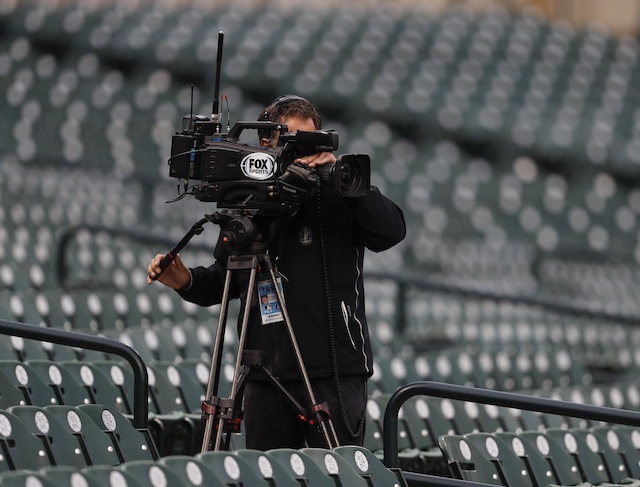These "amateur" athletes drive $B's in revenue for their athletic departments and free marketing dollars for their schools. There was a piece in the Athletic that discussed nick saban's salary and pointed out how he was under paid given how much incremental revenue was driven by increased interest in the university from out of state students after he started to win national titles there (increases in applications from out of state students and increase in % of out of state vs. instate students). They did not mention the athletic revenues a single time in the article because it was clear the athletics were having a significant impact providing FREE marketing for the school and driving huge increases in
total tuition dollars by increasing out of state student enrollment.
These are not "amateurs" who have no value and should be happy to get whatever they are given. These young men and women, along with the university athletic programs they represent,
drive SIGNIFICANT value for both the athletic daprtments and universities as a whole.
Another example is UConn, UCF, Cincinnati, Houston, and many PAC 12 schools who regularly augment their athletic budgets given the limited TV dollars that they receive relative to the other P5 universities (NOTE: this could be required for p3 to keep up with P2).
For example, UConn was left behind when the Big East fell apart and began to fall significantly behind in terms of TV revenue. In the Big East, UConn was within about $6M-$7M of the ACC prior to the 2012. When they joined the AAC, they fell behind the ACC by $30M+/yr in media revenues (about a $24M increased gap). To make up for this, funding from the school and student fees increased by over $20M / yr (similar to the increased TV revenue gap of around $23M-$24M).
Why would the schools do this?
Athletics is a valuable marketing tool for the universities. On top of this,
it is a REVENUE stream for them.... How do schools make money? One KEY revenue source is tuition.
The "Scholarships" that are "given" to these athletes are paid for by ... the
ATHLETIC DEPT NOT THE UNIVERSITY... where does the athletic dept get the money? Tickets, TV revenues, etc. ... basically, these "scholarships" are a way for schools to transfer money from the tv deals and ticket sales to the university's academic side. So, along with funding all the athletic programs that do not make money, paying coaching salaries and new facilities (owned by the university), these athletes also bring in the dollars that PAY FOR THEIR TUITION.
You brought up MLB vs. CFB... let's look at it.
Quick google search shows that MLB TV revenues are "at least" $100M per team. Some are worth more... (see link below)
30 teams x 100M = $3B
30 teams x 150M = $4.5B
So, roughly $4B - $4.5B range.
College athletics, driven by CFB is expected to bring in
$2.8B in 2022 (and about to go up significantly - likely $1B just for the expanded playoff and even more for next round of tv deals like the b10's).
So, looking at TV numbers, in 2022 the gap is about $43M / P5 school vs. $130M-$150M / MLB team...
$43M/$140M = 31%, so college tv money is about 31% of MLB money.
$13M / $43M = 30% , so highest NIL is around $13M or 30% of the LOWEST MLB payroll.... so, it appears CFB players are under paid.
MLB:
MLB's TV deals with ESPN and Turner Sports will begin in 2022 and combined with local deals, each club will get at least $100 million.

dodgerblue.com
CFB:
The gap between the Big Ten and SEC and the rest of the Power Five is set to widen even with new deals, per research firm Navigate.

awfulannouncing.com






